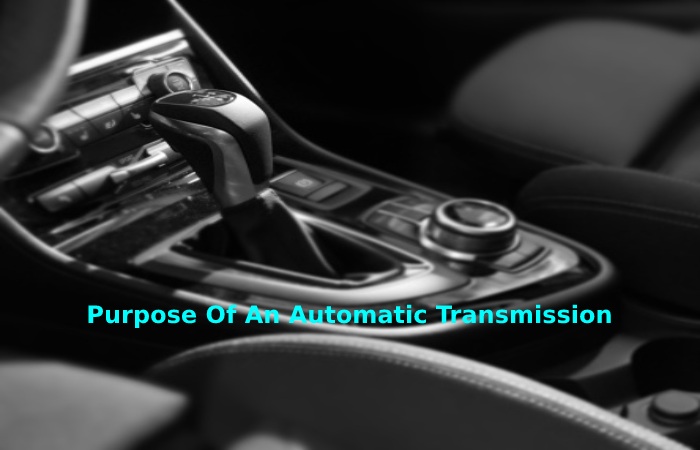Table of Contents
Introduction
If you’ve always driven a car with an automatic transmission, you know that there are two significant differences between an automatic transmission and a manual transmission:
- There is no clutch pedal in a car with automatic transmission.
- There is no gear change in a car with automatic transmission. Once you start the information, everything else is automatic.
Both General Motors and REO launched semiautomatic vehicle transmissions in 1934. These models posed fewer challenges than a standard manual transmission but required a clutch to shift gears. In addition, the GM transmission was the first to use hydraulically controlled planetary information, allowing loads to change depending on the vehicle’s travel speed.
Purpose Of An Automatic Transmission

When you take it separately and look inside an automatic transmission, you find a large variety of parts in a relatively small space. Among other things, we see:
- An ingenious planetary gear
- Banding set to lock the elements of a gear
- Set of three wet plate clutches to lock other gear parts
- An extraordinary hydraulic system that controls the clutches and clamps and also
- Large gear pump to move transmission fluid
The center of attention is planetary gear. Because About the size of a cantaloupe, this piece creates all the different transmission ratios that transmission can produce. Everything else in the information is there to help the planetary gear do its thing. This fantastic gear piece has appeared in HowStuffWorks before. You can recognize it by the article on the electric screwdriver. An automatic transmission contains two sets of complete planetary gears folded together in one component. See How to gear ratios work for an introduction to planetary gears.
Any planetary gear has three main components:
- The planetary gear
- Planetary gears and planetary carrier and also
- The crown
Each of these three elements can be input, output, or can remain held still. The choice of the part that performs each function determines the gear drive ratio. First, let’s look at planetary gear. Since you have interested, you may also read this article: LED Corner Lamp to Change Your Atmosphere
Operation Of An Automatic Transmission How It Works
The most common type of automatic transmission uses hydraulic power to shift gears. According to How Stuff Works, this device syndicates a torque or liquid coupling converter with gears that provide the desired gear range for the vehicle. The torque converter connects the engine to the transmission and uses pressurized oil to transfer power to the gears. This appliance replaces the manual friction clutch and allows the vehicle to stop entirely without stalling.
The information in Art of Manliness describes how an automatic transmission works. As the engine transmits power to the torque converter pump, the pump converts power to transmission fluid, also which supplies the torque converter turbine. This apparatus increases the power of the liquid and transmits even more power to the turbine, creating a power rotation vortex that rotates the turbine and the coupled center axis. Finally, the power generated by this rotation is transmitted from the shaft to the first planetary gear in the transmission. Since you have interested, you may also read this article: Samsung Galaxy Z Flip Verizon 5G Designed Features
Clutches And Bands In An Automatic Transmission
For the overdrive transmission, many things must be connected and disconnected by clutches and clamps. The differential carrier is secured to the torque converter housing by a clasp. The small sun is disconnected from the turbine by a clutch so it can fly freely. The large sun gear is clamped onto the housing so it cannot turn. Each gear shift triggers events like these, with different clutches and bands that engage and disengage. Let’s take a look at a round.
Bands
There are two bands in this transmission. The belts of transmission are steel belts that wrap the sections of the gear train and connect to the housing. Hydraulic cylinders inside the transmission operate them.
In the figure overhead, you can see one of the bands on the transmission housing. The gear train remains removed. Instead, the metal rod remains connected to the piston, which drives the band.
Above, you can get the two pistons that drive the bands. Hydraulic pressure, directed into the cylinder by a set of valves, causes the pistons to push on the clamps, locking the gear part of the gear train into the housing.
How to fix clutches
The transmission clutches are slightly more complex. There are four clutches in this transmission. Each clutch remains driven by pressurized hydraulic fluid entering a piston inside the clutch. Springs ensure clutch release when pressure remains reduced. You can see the clutch piston and the clutch drum below. Note the piston rubber seal, one of the components replaced when the transmission remains rebuilt.
The following figure shows alternating layers of the clutch friction material and steel plates. The friction material remains splined inside, where one of the gears remains locked. However, the steel plate remains splined outside, which locks into the clutch housing. These clutch plates also remain replaced when the transmission remains rebuilt.
Conclusion
An automatic transmission (sometimes abbreviated to auto or AT) remains a multi-speed transmission used in internal combustion engine vehicles that do not require any driver input to shift gears forward under usual driving conditions.
Related posts
Featured Posts
Green Bonds: Investing in a Sustainable Future for the UK
Green bonds have emerged as a vital tool in the fight against climate change and environmental degradation. These bonds are…
Navigating Multifaceted Campaigns: Strategies of Successful Full-Service Agencies
Every agency owner is aware of how challenging it can be to run a digital agency firm. You have to…


